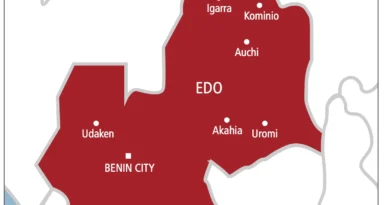NiMet Predicts Delayed Rainfall in Northern States for 2025
The Nigerian Meteorological Agency (NiMet) has predicted that the 2025 rainy season will experience a delayed onset in northern and central states, particularly in Plateau, parts of Kaduna, Niger, Benue, Nasarawa, Taraba, Adamawa, and Kwara.
The agency further indicated that the southern states, including Delta, Bayelsa, Rivers, Anambra, and sections of Oyo, Ogun, Osun, Ondo, Lagos, Edo, Enugu, Imo, and Ebonyi, are expected to experience early onset of rainfall. In contrast, most of the rest of the country will have a normal onset.
At the annual seasonal climate prediction presentation, Minister of Aviation and Aerospace Development, Festus Keyamo, emphasized that pre-onset rainfall activities may occur but should not be confused with the actual start of the rainy season.
NiMet’s forecast also predicted that the rainy season would end earlier than the long-term average in several northern and central states, including Zamfara, Katsina, Kano, Kaduna, Jigawa, Plateau, Bauchi, Borno, Yobe, Adamawa, Taraba, Niger, Kwara, Kogi, FCT, Ekiti, and Ondo. However, a delayed end to the season is anticipated in parts of Kaduna, Nasarawa, Benue, Lagos, Kwara, Taraba, Oyo, Ogun, Cross River, Delta, Akwa Ibom, Ebonyi, Anambra, and Enugu states.
The length of the rainy season across Nigeria is expected to be mostly normal in 2025, though Borno and parts of Yobe may experience a shorter than usual season, while Lagos and Nasarawa are likely to have a longer season.
Regarding dry spells, NiMet forecasted a severe dry spell lasting more than 15 days in Oyo state during the April-May-June (AMJ) season. For the June-July-August (JJA) season, northern states could face a severe dry spell lasting up to 21 days. The “Little Dry Season” (LDS), or ‘August Break,’ is predicted to begin in late July, with severe conditions expected only in parts of Lagos and Ogun.
NiMet’s Director-General, Professor Charles Anosike, emphasized the importance of collaboration across governance levels to effectively use and improve the seasonal climate prediction. Zubaida Umar, the Director-General of the National Emergency Management Agency (NEMA), highlighted the role of NiMet’s climate data in disaster preparedness, response, and mitigation.




